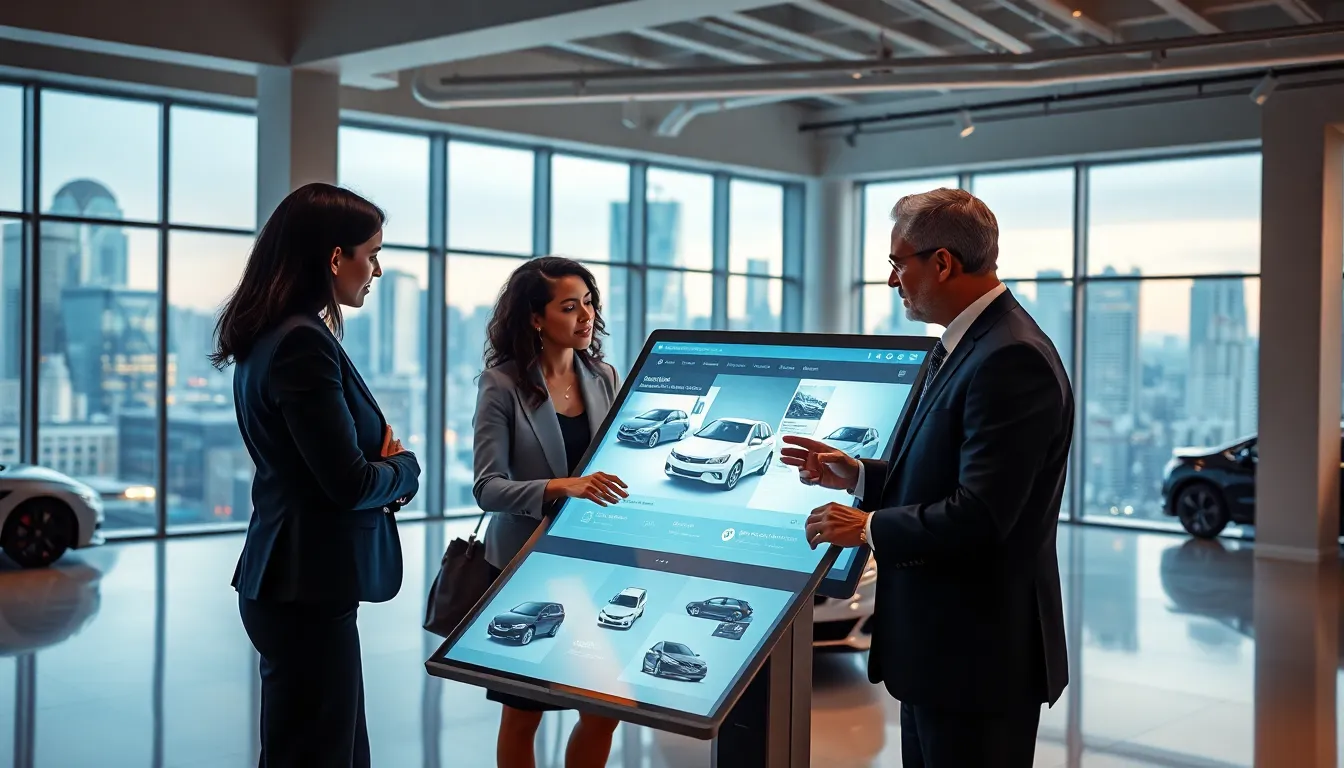Imagine walking into a car dealership, but instead of awkward small talk and a sea of brochures, you’re greeted by a sleek digital interface where purchasing your dream car is as easy as ordering pizza. Welcome to the world of automotive digital retailing tools. As the automotive industry shifts gears towards a more tech-savvy landscape, it’s time to buckle up and explore the innovative tools transforming how vehicles are bought and sold. Get ready to drive into a future where buying a car doesn’t have to be a long, painful process.
Table of Contents
ToggleThe Rise of Digital Retailing in the Automotive Industry

In recent years, automotive digital retailing has surged to the forefront of the industry. Gone are the days when customers relied solely on visiting dealerships to browse their options: the internet has fundamentally altered this landscape. From online showrooms to virtual test drives, digital solutions are redefining how potential buyers interact with car manufacturers and dealerships. Data shows that a substantial percentage of consumers prefer preliminary research and even the purchasing process online. This trend is not merely a passing fad: it’s a reflection of changing consumer behaviors. Millennials and Gen Z, who have grown up in a digital era, exhibit preference for technology-driven solutions, driving the adoption of digital retailing tools.
Interestingly, dealerships that adopt these digital tools are witnessing increased engagement and sales. Shifting from traditional to digital platforms enables them to cater to the tech-savvy audience while providing a seamless car shopping experience. The rise of e-commerce has redefined customer expectations, urging automotive players to elevate their online game.
Key Features of Effective Digital Retailing Tools
When diving into automotive digital retailing tools, several key features make them stand out. Firstly, user-friendly interfaces are paramount. If a tool feels clunky and complicated, customers will quickly lose interest, no one wants to struggle to buy a car. Intuitive design can help customers navigate the buying process smoothly.
Secondly, comprehensive vehicle inventory is essential, allowing customers to explore various makes and models conveniently. Advanced filters enabling users to sort by price, mileage, colors, and other crucial factors can significantly enhance the experience.
Another crucial feature is financing options. Consumers want to calculate payments, evaluate trade-in values, or explore loan terms right from their devices. Generating transparent financing options builds trust and encourages buyers to proceed with their purchase. Finally, integration of virtual reality (VR) capabilities is rapidly becoming a game-changer, allowing customers to experience a realistic view of cars without stepping foot in a dealership.
These features collectively create a compelling toolset that addresses the desires and expectations of today’s car buyers.
Benefits of Utilizing Automotive Digital Retailing Tools
It’s clear that automotive digital retailing tools come with a plethora of benefits. One of the most significant is the ability to streamline the car buying process. Consumers empower themselves by having control over their buying journey, shopping from home, at any hour without the pressure of salespeople looming over them.
Also, these tools enhance transparency. Customers appreciate being able to access public pricing, vehicle history reports, and customer reviews all in one place. This increased transparency fosters a sense of trust between customers and dealerships.
Another substantial advantage lies in enhanced accessibility. Whether someone is in a remote area or juggling a tight schedule, digital tools allow potential buyers to browse and purchase vehicles at their convenience. This accessibility has broadened the customer base for many dealerships, attracting shoppers who might have been reluctant to visit a physical lot.
Challenges in Implementing Digital Retailing Solutions
Even though the many upsides, there are notable challenges associated with implementing digital retailing solutions. One major hurdle is the initial investment. Integrating cutting-edge technology can be costly, and for smaller dealerships, this upfront expense might be daunting.
Another challenge revolves around ensuring a seamless transition. Employees must be adequately trained to use new systems and processes, which can lead to temporary disruptions. Resistance from staff accustomed to traditional methods could impede the adoption of these digital tools.
Also, data security remains a paramount concern. Protecting customer information from data breaches must be taken seriously, as a lapse could tarnish the reputation of both dealerships and manufacturers. Eventually, balancing innovative technology with a smooth operational strategy presents a complex challenge for many in the automotive retail space.
Future Trends in Automotive Digital Retailing
The future of automotive digital retailing looks bright, with several exciting trends on the horizon. As artificial intelligence (AI) continues to evolve, machine learning algorithms will dramatically enhance personalization. Imagine an online shopping experience that adapts to individual preferences, showcasing vehicles and financing options tailored to specific consumer habits.
Another trend involves omnichannel retailing. Customers will expect a seamless interaction between digital and physical environments, with the ability to transition smoothly from browsing online to visiting a dealership. This hybrid approach will enhance overall customer satisfaction.
Also, sustainability will play a significant role in shaping the automotive market. Expect to see more digital tools emphasizing eco-friendly vehicle options and sustainable practices. The growing focus on electric vehicles and environmentally conscious buying will influence how automotive retailing evolves.





